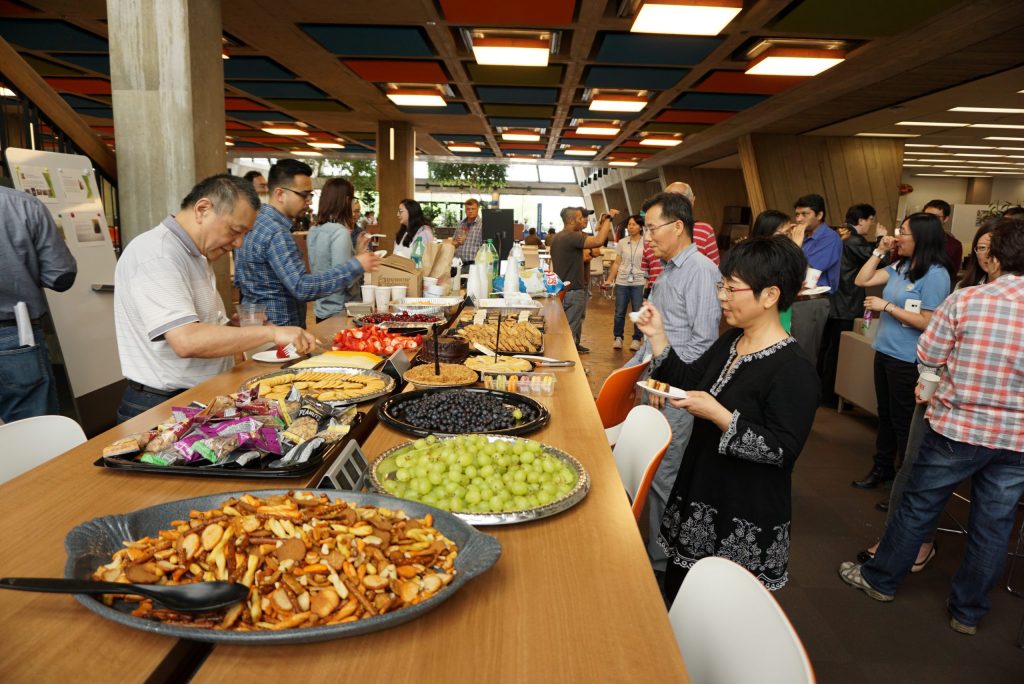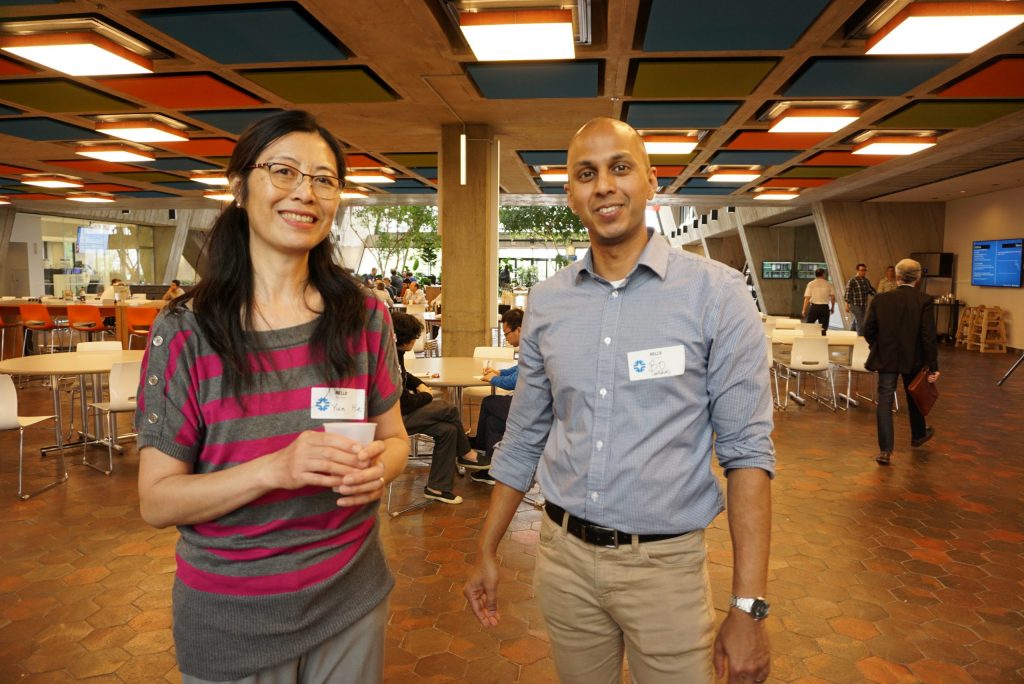Fermilab is striving to achieve equity and inclusion in all of its efforts — both in science and informal laboratory activities. Caitlyn Buongiorno sat down with Bo Jayatilaka and Yun He, co-leaders of the Fermilab Asian/Pacific American laboratory resource group, to talk about how they’re working to foster an environment where Asian Americans and Pacific Islander Americans can thrive.
Can you tell me about Fermilab’s Asian and Pacific Islander American community?
He: Our resource group got started a year ago in May, which is Asian American and Pacific Islander Heritage month. We kind of kicked it off with a labwide meet-and-greet. That was part of an effort to spread the word about our resource group to the lab and get everyone connected. From that connection, we can develop our community at Fermilab.
Jayatilaka: I know that I always find it surprising that the Asian American and Pacific Islander American community, if you look at the employee numbers, is the largest minority group at the lab. As we discovered at the meet-and-greet we had last year, it’s a very diverse community. There are people from a lot of different backgrounds who are at the lab and identify as Asian American or Pacific Islander American.

The Asian and Pacific Islander American community at Fermilab gathers to eat and talk at the group’s first meet-and-greet. Photo: Alex Chen
What is FAPA’s vision and long-term goal?
Jayatilaka: One of the big things that we pushed last year was establishing that there is a community, which is what drove our meet-and-greet. We currently have over 150 members, and a lot of them showed up for that first event.
He: We want people to get to know each other. We really want people to upload their introductory profile on our members Fermipoint page, because it will act as the first step in everyone getting to know each other and support this community. Also, I think for this community, there is really a broad diversity – East Asian Americans, South Asian Americans, Southeast Asian Americans and Pacific Islander Americans. For a long-term goal, we would like to have a representative for each region or group.
What is a diverse workplace, and why is it so important?
Jayatilaka: I mentioned that we’re the largest minority community at Fermilab, but percentagewise, we’re only 9% of the employees here. I think that’s telling of how far we still need to go as an institution. It’s important to have as broad a talent pool as possible. We’re a particle physics lab, the premier particle physics lab in the United States, and particle physics is a global field. It’s important that Fermilab reflects that global community.
He: From an individual point of view, because we are a minority, it is nice to have this community here so we can support one another. There are notable people at Fermilab who are part of this community and who are really doing some outstanding work. I think knowing and supporting each other promotes a more productive atmosphere for the individuals themselves and the lab as a whole.

The FAPA community marks the occasion of their first meet-and-greet with a group photo. Photo: Reidar Hahn
What activities does FAPA have to look forward to?
Jayatilaka: So far, we’ve communicated mostly about events that the community might be interested in. Coming up, we have two specific events on the Inclusion Matters series that are focused on the Asian American community – “Leading from Every Seat” and “Pop Culture and Perceptions.” We want to promote those, and events like them, as much as possible.
He: The lab also has the Global Services Office. As a group, as a community, we want to support the events that they create. They are planning International Taste of Fermilab in July, which is something we want to bring the LRG together for, to support them.
Jayatilaka: We want to someday find a way to highlight members of the lab community who are Asian American or Pacific Islanders who are prominent and have accomplished a lot of things. Or also prominent particle physicists who are Asian American or Pacific Islander American.
How can people support or get involved with FAPA?
He: Participating in the events that FAPA organizes, or even volunteering to help out, would help make this community stronger.
Jayatilaka: At last year’s meet-and-greet, one of the fun things was seeing the younger members of the community talking with some of the more senior members, who have been around for a while, and talking about how their work has changed over time and their experiences. Reaching out to one another and attending events together is amazing.
He: With support from the lab, encouragement from community members, and especially strong support from our Diversity and Inclusion Coordinator Mario Lucero, we can advance and foster a culturally diverse environment at Fermilab that will enable FAPA members to thrive as individuals.
Fermilab employees or users who would like to become involved with the FAPA community or other lab resource groups should contact Mario Lucero.

Yun He and Bo Jayatilaka are co-leaders of Fermilab’s Asian/Pacific American community. Photo: Alex Chen



